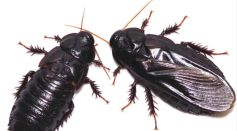ENVIRONMENT & CLIMATE
Secret Revealed: Male Bats Use Odor for Sex Appeal
Did a Magnetic Field Reversal 42,000 Years Ago Cause Climate Disaster?

Society Overhaul: UN Reports the Need to Change Society to Keep Nature Flourishing

Natural Gas Compressor Noise Impacts Songbirds’ Reproductive Success
First Cloned Endangered Species in the US: Black-Footed Ferret Seemingly Brought Back to Life From 30 Years Ago

These Cockroaches Practices Mutual Cannibalism Post-Coital Bliss
Mutation: Why Some People Don't Feel Cold?

Rare Metals Found in Toys and Food Packaging, Is it Due to Plastic Recycling?
Rare and Exotic Cactus from Amazon Rainforest is Set to Flower for the First Time in the UK

Has Polar Vortex Really Arrived? Here’s What Report Indicates

Regenerative Agriculture: What is it?
Recycled, Solar-Power Cellphones are Catching Poachers and Illegal Loggers in Forests

The Failing Health of the Great Barrier Reef
Did Scientists Just Discover The Oldest DNA Ever From a Million-Year-Old Mammoth?
Most Popular

3I/ATLAS: The Truth Behind the Mysterious Interstellar Object Now Targeted by NASA and UN Teams

Hellfire Missile Video Reveals MQ-9 Reapers Being Used for Aerial Combat

Nvidia's Jetson Thor Could Make Humanoids Smarter Than Ever

Cyber Attack on Jaguar and Land Rover Cripples UK Operations: 1 October Earliest Restart as Deliveries Disrupted Worldwide




